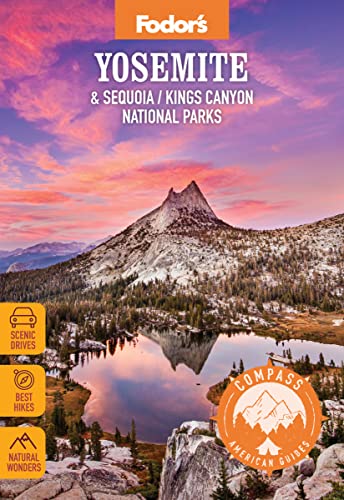Nature: Sequoia and Kings Canyon
The parks can be divided into three distinct zones. In the west (1,500–4,500 feet) are the rolling, lower-elevation foothills, covered with shrubby chaparral vegetation or golden grasslands dotted with oaks. Chamise, red-barked manzanita, and the occasional yucca plant grow here. Fields of white popcorn flower cover the hillsides in spring, and the yellow fiddleneck flourishes. In summer, intense heat and absence of rain cause the hills to turn golden brown. Wildlife includes the California ground squirrel, noisy blue-and-gray scrub jay, black bears, coyotes, skunks, and gray fox.
At middle elevation (5,000–9,000 feet), where the giant sequoia belt resides, rock formations mix with meadows and huge stands of evergreens—red and white fir, incense cedar, and ponderosa pines, to name a few. Wildflowers like yellow blazing star and red Indian paintbrush bloom in spring and summer. Mule deer, golden-mantled ground squirrels, Steller's jays, and black bears (most active in fall) inhabit the area, as does the chickaree.
The high alpine section of the parks is extremely rugged, with a string of rocky peaks reaching above 13,000 feet to Mt. Whitney's 14,494 feet. Fierce weather and scarcity of soil make vegetation and wildlife sparse. Foxtail and whitebark pines have gnarled and twisted trunks, the result of high wind, heavy snowfall, and freezing temperatures. In summer, you can see yellow-bellied marmots, pikas, weasels, mountain chickadees, and Clark's nutcrackers.




